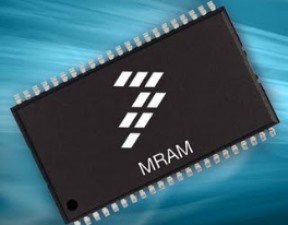



Date:16/07/16
 Despite sluggish DRAM sales in the last few quarters, Samsung Electronics is betting big on it and has now tied up with IBM to develop an all new STT MRAM standard. This is a marked demise from the popular NAND Flash standard used in the most RAMs of present date.
Despite sluggish DRAM sales in the last few quarters, Samsung Electronics is betting big on it and has now tied up with IBM to develop an all new STT MRAM standard. This is a marked demise from the popular NAND Flash standard used in the most RAMs of present date.
As expected, the Spin-Transfer Torque Magnetoresistive RAM or STT MRAM comes with advancements both in terms of copy speed and power consumption. In fact, Samsung and IBM both plan to make use of these RAMs in modern age wearables and activity trackers which tend to require smaller sized chips with an ultra-lower power consumption.
The two companies claim that their STT MRAM consumes zero power during idle state, all thanks to its resistance. That aside, STT MRAM also promises high copy speeds. For stats, the all new MRAM can write a data at just 10 nano seconds as compared to the 1 micro second time taken by current generation NAND Flash devices. This makes STT MRAM 100,000 times faster than NAND flash memory. Apart from that, IBM and Samsung claim that these MRAM, unlike NAND flash, will never wear out with time.
While this MRAM hasn’t yet reached a state to replace DRAM as of now, but it probably would in near future. In fact, the development of IoT (Internet of Things) would promote the use of STT MRAMs, once Samsung and IBM start mass producing the same. It’s however unlikely for these MRAM sticks to make its way into present day smartphones or computers as of yet.
IBM and Samsung develop NAND flash alternative for use in IoT, wearables
 Despite sluggish DRAM sales in the last few quarters, Samsung Electronics is betting big on it and has now tied up with IBM to develop an all new STT MRAM standard. This is a marked demise from the popular NAND Flash standard used in the most RAMs of present date.
Despite sluggish DRAM sales in the last few quarters, Samsung Electronics is betting big on it and has now tied up with IBM to develop an all new STT MRAM standard. This is a marked demise from the popular NAND Flash standard used in the most RAMs of present date.As expected, the Spin-Transfer Torque Magnetoresistive RAM or STT MRAM comes with advancements both in terms of copy speed and power consumption. In fact, Samsung and IBM both plan to make use of these RAMs in modern age wearables and activity trackers which tend to require smaller sized chips with an ultra-lower power consumption.
The two companies claim that their STT MRAM consumes zero power during idle state, all thanks to its resistance. That aside, STT MRAM also promises high copy speeds. For stats, the all new MRAM can write a data at just 10 nano seconds as compared to the 1 micro second time taken by current generation NAND Flash devices. This makes STT MRAM 100,000 times faster than NAND flash memory. Apart from that, IBM and Samsung claim that these MRAM, unlike NAND flash, will never wear out with time.
While this MRAM hasn’t yet reached a state to replace DRAM as of now, but it probably would in near future. In fact, the development of IoT (Internet of Things) would promote the use of STT MRAMs, once Samsung and IBM start mass producing the same. It’s however unlikely for these MRAM sticks to make its way into present day smartphones or computers as of yet.
Views: 631
©ictnews.az. All rights reserved.Similar news
- The mobile sector continues its lead
- Facebook counted 600 million active users
- Cell phone testing laboratory is planned to be built in Azerbaijan
- Tablets and riders outfitted quickly with 3G/4G modems
- The number of digital TV channels will double to 24 units
- Tax proposal in China gets massive online feedback
- Malaysia to implement biometric system at all entry points
- Korea to build Green Technology Centre
- Cisco Poised to Help China Keep an Eye on Its Citizens
- 3G speed in Azerbaijan is higher than in UK
- Government of Canada Announces Investment in Green Innovation for Canada
- Electric cars in Azerbaijan
- Dominican Republic Govt Issues Cashless Benefits
- Spain raises €1.65bn from spectrum auction
- Camden Council boosts mobile security





















